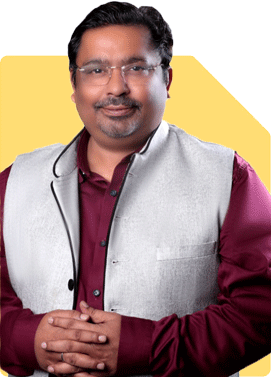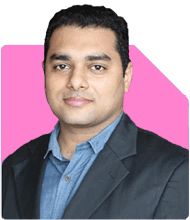Dear Nitin ji, I'm 48 year old male with below details. Please guide me build a retirement corpus of Rs 5 Crore. Family: Wife (Homemaker), Twin sons aged 11. Monthly income = 3.1 Lacs/M. Investments: MFs Total Investments Value 47 Lacs. Current Monthly SIP = 55,000/M. Details: ABSL Focused-D 13 Lacs (SIP 5k); Axis Mid Cap 2.80 Lacs (SIP 5k); HSBC mid cap 1.93 Lacs (SIP 5.5k); ICICI Pru Value Discovery 11.45 Lacs (SIP 14k); Parag Parikh Fexi Cap 15.24 Lacs (SIP 19k); SBI Small Cap 2.68 Lacs (SIP 5k). PPF 13 Lacs monthly 12.5k maturing in 5 years. EPF 75 Lacs. Medical Insurance Family Floater 50 Lacs. Term Insurance 2 Crore, Bank FDs 15 Lacs. Please guide on MFs and any investment avenues based on my above Profile. Thanks.
Ans: You are very focused. That is great. At 48, with stable income and disciplined savings, you are positioned well. Your family structure, income level, and goals give you clarity. Let me now guide you with a complete 360-degree retirement plan.
We will review your mutual fund choices, assess your readiness for Rs. 5 crore retirement corpus, and provide specific improvement points. The answer will be detailed. But every section will stay simple, focused, and relevant to your goal.
# Current Financial Structure – Strong Foundation with Key Strengths
– Age: 48 years
– Family: Wife (homemaker) + Twin sons (age 11)
– Monthly Income: Rs. 3.1 lakh (take-home)
– Monthly SIP: Rs. 55,000
– PPF monthly: Rs. 12,500
– EPF Corpus: Rs. 75 lakh
– Bank FDs: Rs. 15 lakh
– Mutual Fund Corpus: Rs. 47 lakh
– Term Life Cover: Rs. 2 crore
– Health Insurance: Rs. 50 lakh floater
You are doing many things right:
No loans or EMI burden
Good insurance cover for family
High EPF balance
Steady SIP commitment
Excellent financial awareness
But let us now look at this from a retirement planning lens.
# Retirement Goal – Is Rs. 5 Crore Corpus Achievable?
You want Rs. 5 crore retirement corpus. You are 48 now. Assume retirement at 60.
That gives you 12 years to grow wealth.
Current Assets Towards Retirement:
– EPF: Rs. 75 lakh
– Mutual Funds: Rs. 47 lakh
– PPF: Rs. 13 lakh (plus future contributions)
– FDs: Rs. 15 lakh
If you continue SIPs, PPF, and allow EPF to grow, you can achieve your goal.
You need steady growth. And a focused asset allocation. You must also avoid unplanned withdrawals.
But yes, Rs. 5 crore retirement corpus is realistically achievable.
Let us now assess how to improve your strategy.
# Mutual Fund Portfolio – Evaluation and Suggestions
You hold the following mutual funds:
– ABSL Focused Fund – Rs. 13 lakh (SIP Rs. 5k)
– Axis Mid Cap – Rs. 2.8 lakh (SIP Rs. 5k)
– HSBC Mid Cap – Rs. 1.93 lakh (SIP Rs. 5.5k)
– ICICI Value Discovery – Rs. 11.45 lakh (SIP Rs. 14k)
– Parag Flexi Cap – Rs. 15.24 lakh (SIP Rs. 19k)
– SBI Small Cap – Rs. 2.68 lakh (SIP Rs. 5k)
Total Corpus: Rs. 47 lakh
Monthly SIP: Rs. 55,000
Your overall mix is growth-oriented. That is good at your age.
But some changes are needed:
Portfolio Strengths:
– Flexi-cap and value funds offer good long-term growth
– You are disciplined with SIPs
– Reasonable diversification
Weaknesses and Suggestions:
– You have two mid-cap funds. That creates overlap.
– Axis Mid Cap and HSBC Mid Cap both are volatile.
– You have a small-cap fund. Good for wealth growth, but risky after 50.
– You lack hybrid or conservative funds.
– You don’t have goal tagging.
Recommended Actions:
– Keep only one mid-cap fund. Exit the other in a phased manner.
– Consider reducing small-cap exposure gradually post age 52.
– Add 1–2 hybrid equity or balanced advantage funds.
– Tag one or two funds solely for retirement.
– Keep overall portfolio lean. Avoid fund clutter.
Maintain 4–5 core funds only. Too many funds dilute performance tracking.
# SIP Strategy – Expand Smartly
Current SIP is Rs. 55,000 monthly.
Your income is Rs. 3.1 lakh. That gives room to increase SIPs.
Suggestions:
– Increase SIPs by Rs. 5,000 every year for the next 5 years.
– When expenses drop (after kids' education), boost SIP further.
– Avoid pausing SIPs even during market falls.
– Avoid small-cap SIPs post age 55. Shift to flexi-cap or hybrid.
SIP is your engine. Keep fuelling it.
You are investing regularly. Now structure it better.
# EPF and PPF – Steady Retirement Backbone
You already have:
– EPF corpus of Rs. 75 lakh
– PPF corpus of Rs. 13 lakh (with 5 years to maturity)
These two give long-term stability.
Suggestions:
– Continue PPF for full tenure. Extend in 5-year blocks after that.
– Do not withdraw EPF at retirement. Let it grow with interest.
– Don’t rely on EPF alone for retirement. It offers fixed returns, not growth.
Use EPF and PPF as base. Build your mutual fund portfolio for growth.
# Bank FDs – Safe but Not Wealth Creators
You have Rs. 15 lakh in bank FDs.
FDs are safe. But they don’t grow wealth.
Issues with FDs:
– Returns are fully taxable
– Interest barely beats inflation
– No long-term compounding
Suggestions:
– Keep only Rs. 5 lakh as emergency fund
– Reallocate remaining Rs. 10 lakh into suitable mutual funds in 6–8 tranches
– Use hybrid or large & mid-cap funds for transition
FDs are not retirement tools. Shift slowly into better instruments.
# Goal Planning – Tag Investments to Specific Goals
You didn’t mention your sons’ education or marriage planning.
Assuming that is in progress, don’t mix goals with retirement corpus.
Action Points:
– Tag 2–3 funds only for retirement
– Track those funds separately
– Don’t withdraw from them before retirement
– Build a second SIP stream for your sons’ goals
Separate goals = Clear vision = Smarter planning.
# Health and Life Insurance – Strong Protection Setup
You have:
– Term Insurance: Rs. 2 crore
– Health Cover: Rs. 50 lakh family floater
This is good. Your family will be protected.
Review Every 3 Years:
– Ensure health insurance covers all family members
– Check if critical illness cover is needed separately
– Don’t reduce term insurance till retirement
Insurance is not investment. Keep it pure and updated.
# Portfolio Management – Avoid DIY Pitfalls
You have not mentioned using any Certified Financial Planner.
If you are investing in direct mutual funds or managing portfolio yourself, there are risks.
Problems with Direct Plans:
– No personalised rebalancing
– No behavioural support in downturns
– No guidance in fund selection
– Missed opportunities and strategy drift
Problems with DIY Strategy:
– Overlapping schemes
– Confused asset allocation
– Wrong switches based on short-term fear
– No goal tagging or periodic review
Instead, take regular funds through a trusted MFD and Certified Financial Planner.
Yes, regular plans have cost. But they bring peace, direction, and monitoring.
Value is always higher than cost.
# Avoid Index Funds – Not Right for You
If you are considering index funds for future SIPs, be cautious.
Index funds may seem simple. But they are passive.
Problems with Index Funds:
– They cannot avoid falling sectors
– No flexibility to protect downside
– No alpha generation
– You simply track the market, not beat it
You need active management to reach Rs. 5 crore corpus.
Choose actively managed diversified funds. Track, rebalance, and review.
# Retirement Plan – Build a Safe Withdrawal Model
At 60, your total wealth can be around Rs. 5 crore.
But wealth is not enough. You must also plan withdrawal carefully.
Suggestions:
– Don’t withdraw everything from mutual funds at once
– Use systematic withdrawal plans from 61 onwards
– Keep 2–3 years of expenses in debt funds or ultra-short funds
– Keep the rest in equity to grow further
– Review tax impact of withdrawals yearly
Retirement is not one-time event. It is a 25+ year journey.
Structure it well.
# Tax Awareness – Follow New MF Tax Rules
When you sell equity mutual funds:
– LTCG above Rs. 1.25 lakh taxed at 12.5%
– STCG taxed at 20%
– For debt MFs, all gains taxed as per slab
Plan Accordingly:
– Redeem equity after 1 year, up to Rs. 1.25 lakh tax-free
– Avoid selling large lump sums in short term
– Use SWP or phased redemptions post-retirement
Stay tax-efficient. It improves your net return.
Finally
You have built a strong base. You are thoughtful, disciplined, and well-protected.
With your income, savings, and assets, Rs. 5 crore retirement corpus is achievable.
Just follow these:
– Increase SIP every year
– Shift FDs to mutual funds slowly
– Reduce mid and small-cap post age 55
– Add hybrid and flexi-cap funds
– Tag funds to specific goals
– Review yearly with Certified Financial Planner
– Avoid index funds and direct plans
– Keep insurance and retirement plans separate
– Focus on asset allocation, not just returns
If you stay consistent, your retirement will be safe and stress-free.
Best Regards,
K. Ramalingam, MBA, CFP,
Chief Financial Planner,
www.holisticinvestment.in
https://www.youtube.com/@HolisticInvestment



























